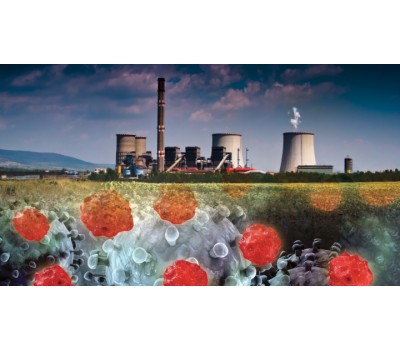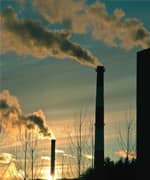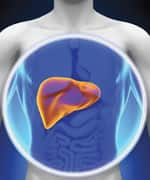Environmental Toxins and Cancer Risk

The chemicals in our water, air, and food, the materials in our home, and non ionizing radiation present cancer risks.1-5
But that doesn’t mean that we are defenseless. Researchers have identified several mechanisms by which most cancer-producing toxins disrupt our body’s defense systems. Compelling evidence reveals how we can defend against these carcinogenic mechanisms.
After reading this article, you’ll be able to select protective approaches that best fit your individual exposure to help counteract some of the highest risks in your own environment.
How Toxins Produce Cancer
While we once thought of “cancer” as a single devastating disease, we now recognize that a range of cells, in various tissues, can undergo “malignant transformation” to become cancer.6
In fact, the body’s natural defenses are repeatedly inhibiting processes involved in cancer development through a series of targeted responses, much like a nation’s security forces.
On occasion, however, a precancerous or malignant cell slips through all of those defenses and may proceed to start a tumor.
In the worst case, the tumor can release tiny clumps of malignant cells that spread cancer to distant parts of the body. Metastatic cancer is almost always a predictor of death as a result of the disease.7
Despite the vast number and diversity of cancer types, there are a relatively small number of events that typically occur in the progression from healthy cell to malignancy. Toxic environmental chemicals, electromagnetic fields,8,9 and ionizing radiation may initiate and/or promote malignancy, operating along a number of mechanisms. Some of these mechanisms include:10-22
- DNA damage,
- Liver detoxification impairment,
- Immune impairment,
- Endocrine disruptors, and
- Loss of apoptosis.
Powerful Cancer Prevention from Mother Nature
It is easy to become fearful about the vast numbers of toxic chemicals and other influences all around us, lurking to produce catastrophic cancers. Fortunately, there are solutions in the form of specific nutrients with powerful cancer-preventing effects.
Compelling scientific studies show that specific nutrients counteract major processes by which toxic compounds and radiation promote malignancies.
By discussing the five major pathways through which toxins initiate cancer, and the nutrients that specifically counteract each of those cancer-promoting processes, we can put together a rigorous cancer chemoprevention regimen.
TABLE 1: NUTRIENTS THAT REDUCE DNA DAMAGE
|
Nutrient |
Cancers Affected* |
|
Carotenoids (lutein, astaxanthin, lycopene)38-43 |
Prostate, colon |
|
Coenzyme Q1044-46 |
Colon, head-and-neck |
|
Fish oil (omega-3 fats)47,48 |
Colon, skin |
|
Genistein (from soy)49 |
Leukemia |
|
Plant polyphenols28,50,51 |
Multiple |
|
Probiotics (Lacto-bacillus rhamnosus)34 |
Colon |
|
Quercetin45 |
Head-and-neck |
|
Selenium29,30 |
Colon, breast |
|
Vitamin C32,33,52-56 |
Breast, colon, skin |
|
Vitamin D36,57 |
Colon, skin |
|
Vitamin E31,58-63 |
Liver, breast |
*These are only a few of the types of cancers affected by these nutrients.
DNA Damage
The first way toxins may lead to cancer is by breaking DNA strands. Damage to DNA is a major initiating factor in cellular transformation to cancer. DNA damage can be caused by toxins that break DNA strands (such as pro-oxidant chemicals or ionizing radiation).10,23 Such damage can induce mutations in the DNA that trigger cancer.24-27 That is why nutrients that prevent DNA damage, or ones that promote its repair, are so potent in protecting against cancer.
Given the role of oxidative stress in causing such damage, nutrients that reduce DNA damage (i.e. vitamins C and E and the trace mineral selenium), are often considered as a first line of defense.28-33
Surprisingly, probiotics, which are normally associated with improved gastrointestinal function, have been found to be effective at reducing DNA damage specifically in the colon. This may help to prevent colon cancer, the third cause of cancer-related deaths in the US.34,35
And, while sunlight exposure can boost vitamin D levels, such exposure also raises DNA skin damage, butvitamin D supplementation can protect against DNA damage throughout the body.36,37
Nearly a dozen nutrients have been found to prevent DNA damage, resulting in a positive impact on cancers of the prostate, colon, breast, skin, liver, and more.
Table 1 above lists just a few of the nutrients known for their DNA-protective effects.
WHAT YOU NEED TO KNOW
 |
Environmental Toxins and Cancer
- The heavily industrialized nature of our modern world constantly exposes us to toxic, cancer inducing, and cancer promoting influences.
- Chemical toxins as well as various sources of radiation can initiate cancer through DNA damage and promote tumor development through mechanisms involving liver enzyme systems, suppressed immunity, disruption of your hormones, and hijacking of cells’ normal death-inducing programs.
- You can’t realistically evade all of the factors that can cause cancer in your life, but you can leverage modern scientific knowledge to your benefit.
- Many nutrients are available with known cancer-fighting benefits, including those that directly counteract the major processes by which toxic compounds and radiation promote malignancies.
- Choose one or more nutrients from each category to provide yourself with the best possible natural protection against toxic, cancer-inducing forces in your environment.
Liver Detoxification Systems
The second way environmental toxins cause cancer is through their detrimental impact on liver detoxification systems. Liver detoxification systems play a major role in managing ingested toxins because blood from the digestive tract goes to the liver before being pumped around to the remainder of the body.
The liver has two major detoxification pathways: Phase I and Phase II. Phase I enzymes convert toxic chemicals into compounds that may be more toxic than the parent compound.64 Unfortunately, if the toxic load is too heavy, it can cause overactivity of Phase I enzymes, which can have the reverse effect of converting relatively harmless substances into potential DNA-damaging carcinogens.11,12,65
Making matters worse, the worst offenders of overactive Phase I enzymes are substances some people encounter on a daily basis, including alcohol, saturated fats, and exhaust fumes, among others.64,66
In Phase II detoxification, the liver adds another substance to the toxic chemical in order to make it more water soluble. This allows your body to excrete the toxin through bile or urine, helping remove the potentially carcinogenic substance from the body.11,12,64,67,68
For these reasons, cancer-preventive nutrients that influence liver metabolism are generally those thatregulate toxin-enhancing Phase I reactions, promote toxin-neutralizing Phase II reactions, or, in many cases, do both.69-71 Nutrients that regulate these liver detoxification systems come largely from dietary plants and their extracts.
Several nutrients have this dual action on liver enzymes, including curcumin, folic acid, and garlic, among others. Research suggests this may have a positive impact on preventing some of the most common and deadly cancers.50,51
See Table 2 for a list of nutrients that prevent cancer by regulating the liver’s detoxification enzymes.
TABLE 2: NUTRIENTS THAT REGULATE LIVER DETOXIFICATION ENZYMES
 |
|
Nutrient |
Impact on Liver Enzymes |
Cancers Affected* |
|
Chlorophyllin72, |
Inhibit Phase I; boost Phase II |
Liver, colon, prostate |
|
Curcumin73-78 |
Inhibit Phase I; boost Phase II |
Breast, colon, prostate, pancreas |
|
Folic acid79-81 |
Inhibit Phase I; boost Phase II |
Breast, pancreas |
|
Garlic82-86 |
Inhibit Phase I; boost Phase II |
Breast, liver, prostate |
|
Genistein87 |
Boost Phase II |
Colon |
|
Isothiocyanates (sulforaphane, PEITC) from cruciferous vegetables 69,72,88 |
Inhibit Phase I; boost Phase II |
Liver, colon, breast, prostate |
|
Plant flavonoids (i.e. chrysin, genistein, quercetin) 89,90 |
Inhibit Phase I; boost Phase II |
Multiple |
|
Silymarin (milk thistle)91 |
Boost Phase II |
Liver |
*These are only a few of the types of cancers affected by these nutrients.
Immune Surveillance
The third way environmental toxins can cause cancer is through their impact on immune surveillance. Immune surveillance refers to the immune system’s continual search for cells bearing signs that they have become cancerous.92 A number of environmental toxins can suppress immune surveillance, raising the risk that a malignant cell will slip under the radar, form a tumor, and successfully spread to other parts of the body.13-17,93
Nutrients that enhance immune surveillance are only now being recognized as powerful contributors to the body’s lifelong fight against cancer. These nutrients boost those components of the immune system that are responsible for recognizing the unique tumor “markers” displayed on the surface of malignant cells, and then destroying those cells.
Nutrients that enhance immune surveillance may stimulate growth and proliferation of tumor-detecting lymphocytes, promote a vigorous attack on tumor cells by so-called “natural killer cells,” and/or stimulateantibody production, which aids in immobilization and destruction of malignant cells.
Table 3 lists nutrients capable of activating one or more components of the immune system in order to destroy developing cancers.
TABLE 3: NUTRIENTS THAT BOOST IMMUNE SURVEILLANCE
|
Nutrient |
Immune Mechanism |
Cancers Affected* |
|
Enzymatically modified rice bran94-97 |
Increases natural killer cell activity |
Leukemia, Multiple Myeloma, Liver |
|
Cistanche extracts98-101 |
Increases naïve T-cells, increased expression of transforming growth factor beta, decreases inflammation |
Colon |
|
Grape seed proanthocyanidins102 |
Induction of immunoregulatory cytokines; stimulation of tumor-destroying T cells |
Skin |
|
Green tea polyphenols (EGCG) 102-107 |
Activation of tumor-killing T-lymphocytes and natural killer cells; induction of immuno-regulatory cytokines |
Colon, skin, lung, prostate, breast |
|
Probiotics (lactic acid bacteria)108-110 |
Decrease inflammation; increase immunoregulatory cytokines; increased interferon-gamma production |
Colon, skin |
|
Reishi mushroom (Ganoderma lucidum)111-114 |
Enhanced proliferation of tumor-killing T-lymphocytes, antibody-producing B-lymphocytes, and natural killer cells |
Liver, lymphoma, lung |
|
Resveratrol115,116 |
Sensitizes tumor cells to killing by cytokine-induced killer cells; enhances cytokine-induced killer cell activity |
Leukemia |
|
Silymarin102 |
Induction of immunoregulatory cytokines; stimulation of tumor-destroying T cells |
Skin |
|
Vitamin D117 |
Reduced inflammation |
Colon |
*These are only a few of the types of cancers affected by these nutrients.
Endocrine Disruptors
The fourth way environmental toxins can cause cancer is through their impact on endocrine disruptors.Endocrine disruptors are chemicals that interact with sex hormones and/or their receptors to promote cancer development.17-19,118
Not surprisingly, nutrients that inhibit endocrine disruptors show promise in preventing hormone-dependent cancers such as those of the breast, uterus, and prostate. Although scientists don’t yet fully know how these nutrients work to inhibit endocrine disruptors, it may involve enhanced excretion or reduced absorption of toxins from the intestinal tract.119,120
Table 4 lists nutrients capable of inhibiting endocrine-disrupting pollutants. In addition, there are also a number of plant flavonoids (i.e. chrysin, genistein, quercetin) that are effective against endocrine disrupting toxins.
They appear to reduce the activity of estrogen-producing enzymes such as aromatase, thereby reducing overall sex hormone predominance and starving hormone-dependent tumors of their vital growth factors.89
TABLE 4: NUTRIENTS THAT INHIBIT ENDOCRINE DISRUPTORS
|
Nutrient |
Toxin Inhibited |
Cancers Affected* |
|
Chlorella pyrenoidosa 120-124 (More efficiently obtained as chlorophyllin) |
Dioxin (a polychlorinated biphenyl [PCB]), perfluorinated compounds (PFCs) |
Breast, prostate |
|
Folic acid125-127 |
Bisphenol A (BPA), phthalates |
Breast, prostate |
|
Genistein125,126 |
BPA, phthalates |
Breast, prostate |
|
Probiotics (Lactobacillus,Bifidobacterium) 119,128,129 |
BPA |
Breast, prostate |
|
Vitamin C52 |
Heavy metals (lead, copper, iron) |
Liver, lung, prostate |
|
Vitamin E52 |
Heavy metals (lead, copper, iron) |
Liver, lung, prostate |
*These are only a few of the types of cancers affected by these nutrients.
Loss of Apoptosis
Another way environmental toxins are associated with cancer is through inducing a loss of apoptosis, or programmed cell death. Loss of apoptosis refers to the “immortality” typical of cancer cells. Normal body cells are programmed to die off when appropriate.130 Cancer cells have lost this ability (often as a result of DNA damage), which allows them to reproduce essentially without limit.131 A number of chemical toxins, particularly aflatoxin, a potent inducer of liver damage, can switch off the gene responsible for producing apoptosis,132 which results in cancer promotion.20-22
Nutrients that restore cells’ natural ability to die by apoptosis represent the final category in our listing of nutrients that help fight against cancers caused by environmental toxins. These nutrients typically act by modifying various signaling pathways. This means that they can activate genes that become suppressed when cells become cancerous, including genes that normally support the graceful death of a cell that is no longer useful or poses a threat.133
By restoring the natural self-destruction program initiated by apoptosis genes, these nutrients put a sharp roadblock in the way of a developing tumor. This allows other anticancer mechanisms such as immune surveillance to clear the remainder of the battlefield.133
Nutrients known to promote apoptosis include coffee extract, quercetin, pine bark extract, and selenium. Research shows they have a positive impact on bladder, colon, and ovarian cancers, among others.
See Table 5 for a more detailed list of nutrients that promote or restore apoptosis capabilities in malignant cells.
TABLE 5: NUTRIENTS THAT PROMOTE APOPTOSIS
|
Nutrient |
Cancers Affected* |
|
Chlorophyllin134,135 |
Bladder |
|
Coffee extract136 |
Colon |
|
Curcumin25,137,138 |
Leukemia, colon |
|
Emblica officinalis (amla; Indian gooseberry)139 |
Ovary |
|
Green tea extract (EGCG)140-144 |
Leukemia, lymphoma, head-and-neck |
|
Lycopene38 |
Prostate |
|
Phenyl isothiocyanate (PEITC) from cruciferous vegetables67 |
Bladder, lung |
|
Pine bark extract (Enzogenol)145,146 |
Leukemia |
|
Prebiotics (fermentable fiber, which produces butyrate, induces apoptosis)136 |
Colon |
|
Probiotics (Lactobacillus salivarius)147 |
Oral |
|
Propolis136,148 |
Colon |
|
Quercetin139 |
Ovary |
|
Red clover isoflavones149 |
Prostate |
|
Rosemary (carnosol)150, 151 |
Prostate, colon, skin, breast, kidney, liver |
|
Sarsaparilla (Smilax glabra)152 |
Multiple |
|
Selenium153 |
Colon, lung, prostate |
|
Soy isoflavones (genistein, daidzein)38,154 |
Prostate |
*These are only a few of the types of cancers affected by these nutrients.
Sources of Cancer-Inducing and Cancer-Promoting Toxins
While it is impossible to avoid all cancer-causing environmental toxins, it is important to be aware of some of the most prominent sources. We have compiled a list of common toxins broken down by their environmental sources. As you’ll see from this list, these can be found in sources we interact with on a daily basis, including our food, water, plastic, cell phones, and even sunlight.
- Aflatoxins are toxic chemicals produced by Aspergillus fungi growing on grains and peanuts, particularly those stored improperly. Chronic exposure induces cancer by multiple mechanisms.155,156
- Polycyclic aromatic hydrocarbons are chemical structures composed of carbon, hydrogen, and occasionally other atoms. They are products of fossil fuel combustion, particularly petrochemicals, and are a major source of cancer-causing chemicals in polluted air.157,158
- Bisphenol A (BPA) is one of the highest-volume toxic chemicals found worldwide.159 It is used in making all kinds of plastics and resins, including water bottles and food containers.
- Heavy metals (including cadmium, arsenic, nickel, lead, and mercury) are naturally occurring components of the earth’s crust.160 Human exposure results from mining,161 smelting,162 and petroleum manufacturing,163 all of which release heavy metals into the air, water, and soil.
- Pesticides and herbicides,164 especially those containing organic chemicals bonded to chlorine or bromine, are found in agricultural settings, where they make their way into the food chain. Sadly, even after the highly toxic dichlorodiphenyltrichloroethane (DDT) was banned, risks still abound, both because of persistent DDT in the environment and because newer compounds intended to replace DDT (such as methoxychlor) are turning out to have their own cancer-inducing properties.18
- Dioxins and dioxin-like chemicals such as polychlorinated biphenyls (PCBs) are commonly found in foods of animal origin (meat, dairy, and fish,165,166 depending on the country of origin).167
- Heterocyclic amines are chemicals that form when meat is cooked at high temperatures (e.g., grilled or broiled).72
- Ultraviolet radiation is a natural component of sunlight, but serves as a powerful source of many of the changes that lead to cancer.168
- Electromagnetic field radiation, especially the kind produced by cellular phones and their transmitting stations,169 are only now emerging as potential environmental threats. Such radiation is associated with DNA damage,170-172 potentially leading to cancer.173,174
This is by no means an exhaustive listing of cancer-related environmental toxins. Toxins are ubiquitous, particularly in our highly industrialized society. They are, therefore, nearly impossible to avoid, but as we have read, we know that we are not helpless. We can arm ourselves with knowledge about natural products capable of offsetting much of the increased cancer risk posed by environmental toxins.
TOXINS THAT INDUCE OR PROMOTE CANCER*
|
Basic Mechanism |
Toxins |
|
Increased DNA damage |
|
|
Activation by liver enzymes |
|
|
Suppress immune surveillance |
|
|
Endocrine disruption |
|
|
Loss of apoptosis |
|
*These are only a few of the types of cancers affected by these nutrients.
Summary
We are awash in a sea of toxins and invisible radiation that constantly promotes malignant transformation of our cells, leading to persistently high rates of cancer.
Despite the seemingly immeasurable amount of environmental toxins, there are five mechanisms through which they typically work to promote cancer. This allows us to identify nutrients that have cancer-fighting properties that work specifically against these mechanisms.
Just as the chemicals that cause cancer do so by multiple mechanisms, natural products offer multiple, overlapping, and complementary approaches to cancer prevention.
By becoming familiar with the major cancer-inducing and cancer-promoting toxic influences in your world, you can then develop a supplement regimen that covers all five mechanisms by which we know that toxins and radiation induce cancerous changes.
By choosing carefully from among the nutrients listed in this article, you can establish a solid cancer-fighting base in your own body—one that works with your natural defenses to defeat cancers before they get established.
By Stephanie Westfall
Article extracted from Life Extension Magazine


Social Login